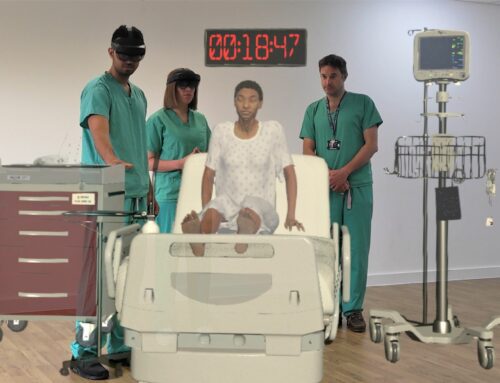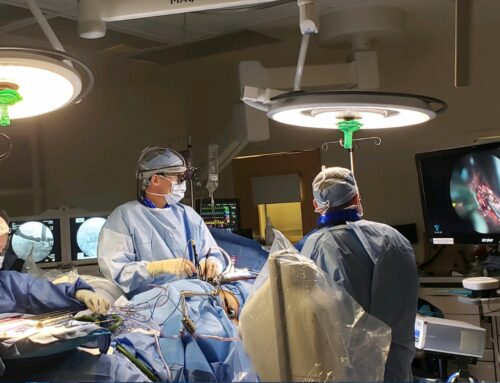The ongoing COVID-19 global pandemic is having an enormous impact on the healthcare technology market. While it is too soon to offer a detailed impact analysis of how each product market will react, the substantial financial burden on healthcare providers is certain to reshape the industry in the coming months and years. For example, a recent report from the American Hospital Association (AHA) estimates a total four-month (March to June) financial impact of $202.6 billion in losses for America’s hospitals and health systems, or an average of $50.7 billion per month.
Below, we review some of the initial results and guidance gathered from leading healthcare technology vendors’ financial results and guidance for 2020, released in April and May 2020. We also add our current early view of the main market impact of the COVID-19 pandemic, with focus on the imaging modality and imaging IT product sectors.
Further detailed analysis and forecast revisions on the markets we cover will be issued as part of our market intelligence services and reports for clients.
Q1 2020 Results Summary
Key analysis summary:
- Mixed impact: strong demand in Lifecare solutions (most likely ventilators and patient monitoring) compensating for areas hard hit such as Pharmaceutical Diagnostics, down ~50%.
- Order volume for MRI and interventional systems also highlighted as challenging; “Big iron certainly got hit” (CEO Larry Culp).
- Overall equipment revenue flat, with services revenue up 2% year-on-year.
- Headcount reduction cited as part of margin expansion plans for 2020, part of previous plan before pandemic impact.
- Based on model of Chinese market dynamics, business “expects to be down in Q2 with potential recovery after” (CEO Larry Culp).
Despite some operational challenges and a large exposure to the Chinese market, GE posted solid results in its healthcare business. However, based on the impact to its operations in China, is it expecting a bigger impact in Q2 results (April-June) before a more positive recovery in the second half of 2020. Flat equipment revenue also likely suggests a spike in demand for Lifecare solutions (COVID-19 products cited as accounting for half of all orders from healthcare systems) offsetting the initial impact of imaging modality order declines, which will no doubt worsen in Q2 with limited access for installations with severe social distancing restrictions in place in most global markets.
Key analysis summary:
- 80% increase in order intake for Connected Care, namely ventilators and patient monitors.
- Diagnostic imaging grew mid single digits, offset by a low single digit decline in Image Guided Therapy business
- Planning four-fold production increase of ventilators from 3Q20.
- Expects to return to growth and profitability in the 2H of 2020 assuming planned elective procedures volume normalises.
- Emerging market sales down 12% comparable, with China a clear double digit decline due to COVID-19.
- No cancellation of orders due to COVID-19 outbreak cited.
Philips Healthcare offered a mixed set of results with an overall slight revenue decline in Q1. However, the sudden surge in the Q1 order book (most notable a 50% increase in Western Europe) suggests COVID-related products in the Connected Care division (24% of total sales) will offset near term impacts to its Diagnosis and Treatment (44% of sales) and Personal Health (30% of sales) divisions. Postponement of orders was a clear pointer that interventional X-ray and big-iron modality demand will be further impacted in Q2. However, the firm also cited strong demand for Telehealth and Command Centre products, with its current order book from Q1 2019 and Q1 2020 requiring the rest of CY2020 to fulfil.
Key analysis summary:
- Imaging and Advanced Therapies revenues both up ~6%; offset by drop of ~2% in Diagnostics business
- Expecting next quarter (Q3 Siemens fiscal, Q2 calendar) to be “trough” with some pent-up demand from Q1 2021 (Q4 2020 calendar)
- EMEA and Americas robust results; Asia impacted due to early COVID-19 impact in China
- Recovery timing uncertain for Siemens Q4 and beyond; FY20 guidance no longer valid
Siemens Healthineers’ results suggest that its business has only been marginally impacted so far from the COVID-19 pandemic, namely from demand in China and falling reagent volume demand in its Diagnostics business. However, it is clearly expecting a far more negative “trough” in its equipment business into the next two quarters. Moreover, with no ventilation or patient monitoring equipment business in its portfolio buoyed by COVID-19 related demand to offset declines, the impact of the pandemic will probably be more keenly felt near term. Travel restrictions and slower implementation of equipment were cited as challenges, with an overall more significant hit to equipment than its services businesses, which should be a “stabilising element” (CEO Bernd Montag). The company has already cited expected margin pressure near term.
Key analysis summary:
- First quarter decline indicative of drop in imaging modality demand
- Large system installs progress slow due to limited access to hospitals
- Stagnant business negotiations in Europe and US due to restrictions cited as main concern
- Company expects near term decline on account of COVID-19 will be tough to offset over course of CY2020 so expecting substantial impact
Canon Medical has perhaps the least diverse healthcare technology business of those reviewed, with medical imaging equipment dominating its product portfolio. Moreover, it also has a relatively small informatics business, viewed initially as a more robust segment in comparison to imaging equipment. The firm also has limited exposure to China in comparison to its peers, suggesting that its initial revenue drop last quarter was mostly driven by its leading markets of Japan, North America, and Western Europe. The firm has also retracted full calendar year guidance, with a substantial impact to its business expected.
Three Key Takeaways: The Signify View
It is very clear from both the financial guidance of leading healthcare technology vendors and our recent discussions with the industry that the market outlook is shrouded in uncertainty.
Moreover, the spread and impact of the COVID-19 pandemic is highly regional, with differing rates of recovery and variance in the severity and scale of social distancing restrictions imposed. For healthcare technology vendors, navigating the coming months will be a continual re-evaluation and re-forecasting exercise. However, based on our research with vendors and observations of the market dynamics so far, we believe the following three broad trends will be evident in 2020 and 2021.
Diversity of portfolio will limit business impact, imaging modality pain likely short and sharp
While demand for some COVD-19 related products such as ventilators and patient monitoring equipment offers an obvious upside for some of the largest vendors, we believe overall portfolio diversity will be a key differentiator in the impact of the pandemic on each vendor.
Businesses with a dominant proportion of revenue generated from large capital expenditure deals for big-iron imaging modalities or diagnostics equipment (e.g. in-vitro diagnostics) will more acutely feel a near-term drop in revenues in Q2 and Q3. Initial research on the US market has suggested imaging procedural volumes have dropped between 40% and 80% (1,2) as patients stay away from attending more routine imaging exams such as mammography for breast cancer screening.
A spike in inventory capacity and navigating social distancing restrictions at customer sites and production facilities are also creating operational and financial challenges near-term. Those with mobile X-ray products and point of care ultrasound products will fare a little better, with many firms ramping up production volumes to meet demand. Vendors with a more balanced portfolio of equipment and informatics products in multiple segments should be less acutely impacted in comparison.
Overall, we see the impact on imaging equipment being relatively short and sharp, with shoots of recovery in most mature markets being realised in Q4 2020, assuming healthcare provider financial support is not rapidly wound down in the coming months, there is no major “second spike” of the pandemic and “elective” imaging returns to more normal levels in leading markets. Given this scenario, we would also expect a more robust rebound into 2021 and 2022, aided by more certainty post the US election in November 2020 and release of China’s new “Five Year Plan” in early 2021.
1) https://www.auntminnie.com/index.aspx?sec=sup&sub=imc&pag=dis&ItemID=128865
2) https://ehrn.org/delays-in-preventive-cancer-screenings-during-covid-19-pandemic/
Imaging informatics business is holding firm, for now
In general, service business for the leading health tech vendors has held firm so far, with a less pronounced impact currently predicted for 2020. In terms of imaging informatics, demand for home reporting workstations and networking for radiologists has seen a clear uptick. Some advanced visualisation image analysis tools have also been in demand as part of COVID-19 responses.
Software revenues have been less severely impacted with most revenue in Q1 being generated from deals signed before the onset of COVID-19. As lead-time for imaging informatics deals can span from 6-18 months or longer from contract agreement, revenues in the first three quarters of 2020 should be less affected, assuming vendors and providers can continue the delivery of projects with a vastly reduced on-site presence and alongside health provider COVID-19 response plans. Professional services and consulting will be the most susceptible aspect of imaging informatics short-term, with fewer opportunities for upsell of new service elements.
For imaging informatics, 2H 2020 will offer a better view into the likely impact of COVID-19. If, as we expect, new deal pipeline for imaging IT deals slows, Q4 2020 and 1H 2021 will be more negatively impacted.
We currently expect at least some postponement of signing new deals or scaling-back on complexity of large multi-provider or regional enterprise radiology or enterprise imaging procurement in the coming months. Budget uncertainty, the prioritisation of COVID-related projects and the rolling lockdown restrictions at a regional level will also have some affect during this period. In some cases, health providers may opt for shorter term contract-roll, negating the need for more costly upgrades or replacement. While this will go some way to limiting a drastic revenue drop-off, it will also supress growth opportunity for the imaging IT sector until much later.
The outlook for machine-learning based image analysis tools also looks far from certain at this juncture. While there has been a clear effort from new vendors in this product segment to adapt their offerings to support COVID screening and diagnosis, the speed of availability of some products calls into question the clinical validity and evidence to support their use. The COVID-19 pandemic could therefore lead to a dichotomy for market development; on the one-hand the pandemic has demonstrated the need for use of AI-based image analysis to support under-resourced health systems; yet at the same time, roll-out of poorly integrated and unvalidated solutions could risk damaging health provider trust in the use of AI-based image analysis tools, limiting the rate of future adoption post COIVD-19.
Vendors remaining stoic in face of decline and hopeful COVID-19 invigorates transformation of health systems and new digital demand
Overall, the healthcare technology industry is navigating an uncertain future. Yet in context it remains relatively robust in comparison to many other industry verticals. The sentiment in the financial guidance from the publicly listed vendors and from our discussions with the industry so far all suggest the overall impact will be far from catastrophic. Intriguingly, the market “shock” that the COVID-19 pandemic has brought could also be the catalyst to re-shape the sector and drive digital care transformation more quickly than would have been expected pre-pandemic.
For healthcare technology vendors already embarking on a strategy focused on combining imaging hardware, clinical diagnostics and digital platforms, the longer-term outcome will help to temper the short-term pain of declining sales. For less diversified vendors, recent events may force them to adapt to changing customer needs. Business models will also continue to evolve, especially in accelerating a move from capital expenditure heavy-models towards more predictable and robust operational or risk-based contracting agreements and partnerships.
While it is still too soon to speculate as to more detailed long-term predictions, we do expect to see more focus from governments, payers and healthcare providers on the digitalisation of healthcare; interoperability and networking, cloud-architecture, adoption of clinical command centres, telehealth and population health management analytics are all more obvious outcomes, but will take time to be realised.
Q2 2020 result are expected to provide a better indicator as to the full-scale impact of the pandemic on healthcare technology and offer some better guidance on the longer-term financial outlook. But the longer-term outlook is perhaps less negative, with opportunity for more rapid digital transformation. Whether it hurts a little or a lot in 2020, the COVID-19 cloud could yet have a silver lining for healthcare technology in the years to come.
More Information
E: steve.holloway@signifyresearch.net
T: +44 (0) 1234 436 150
www.signifyresearch.net
















